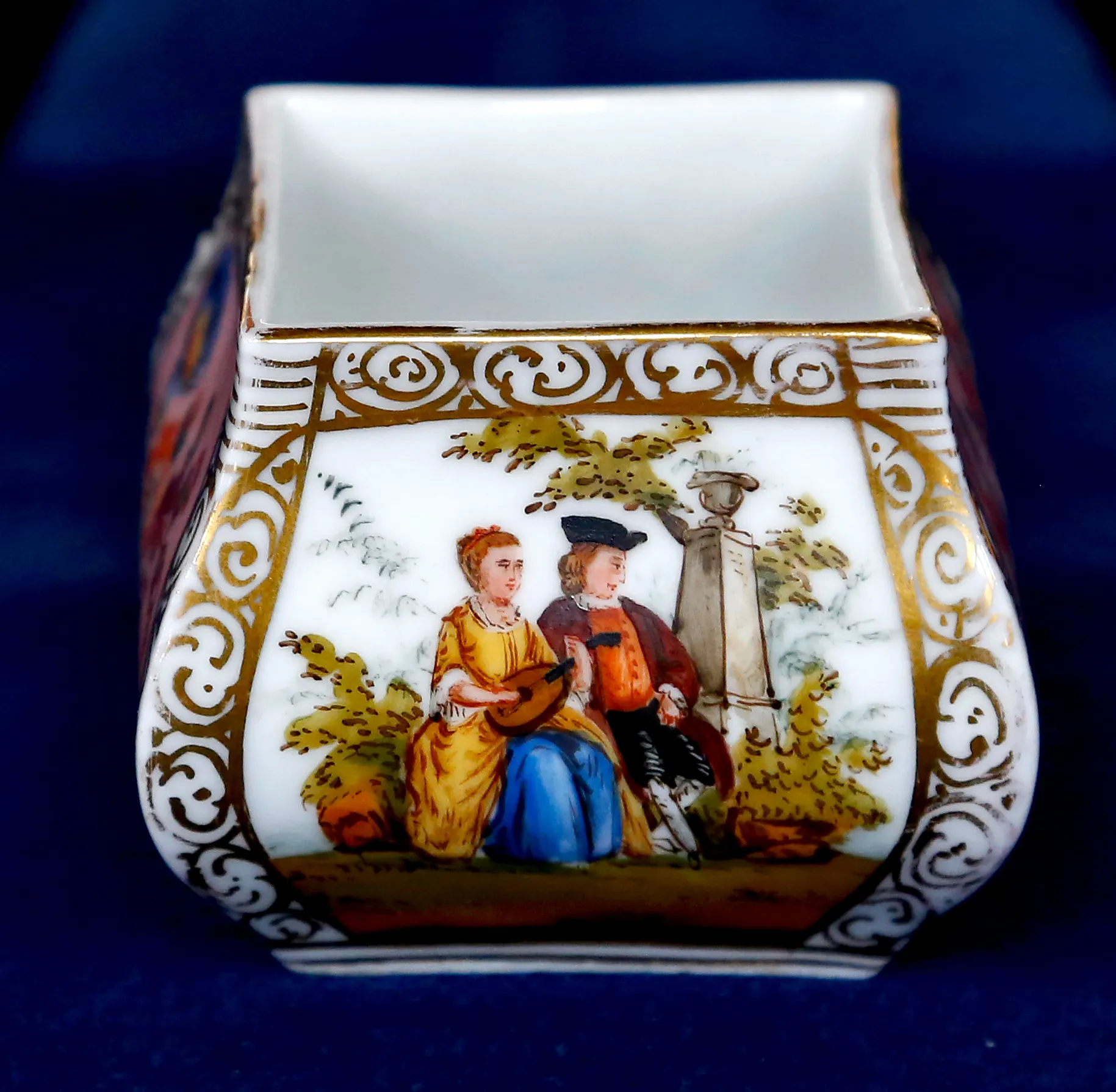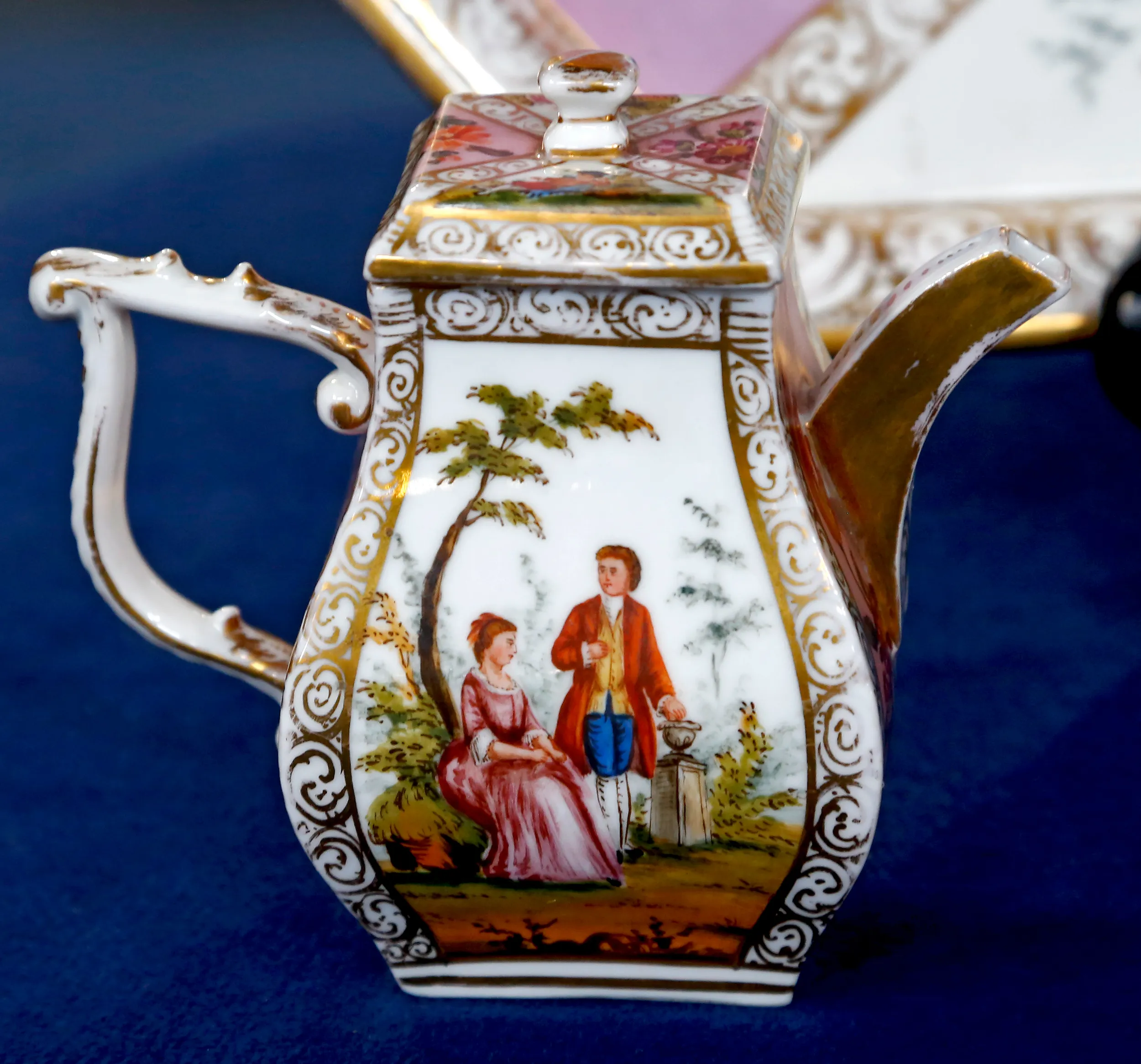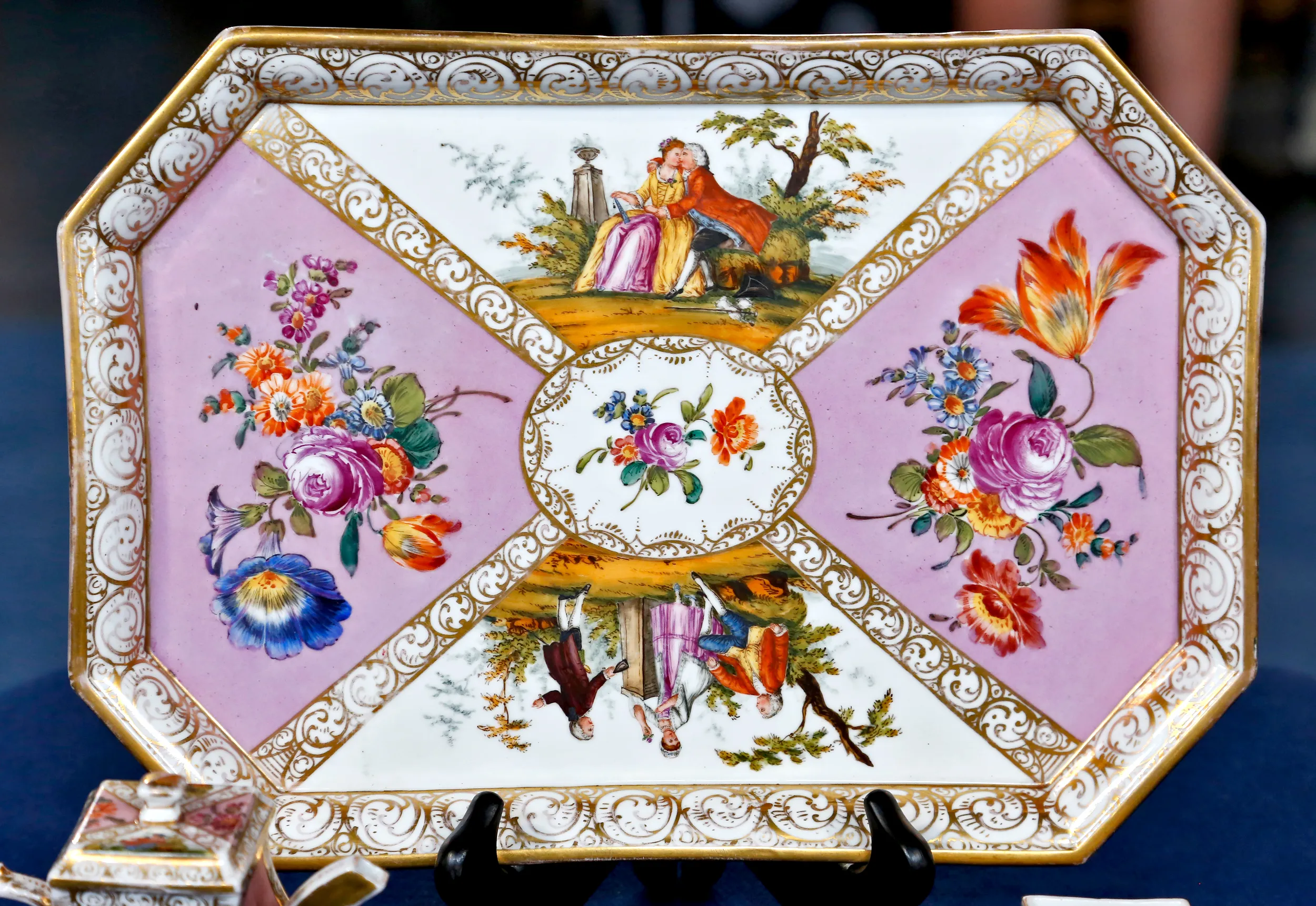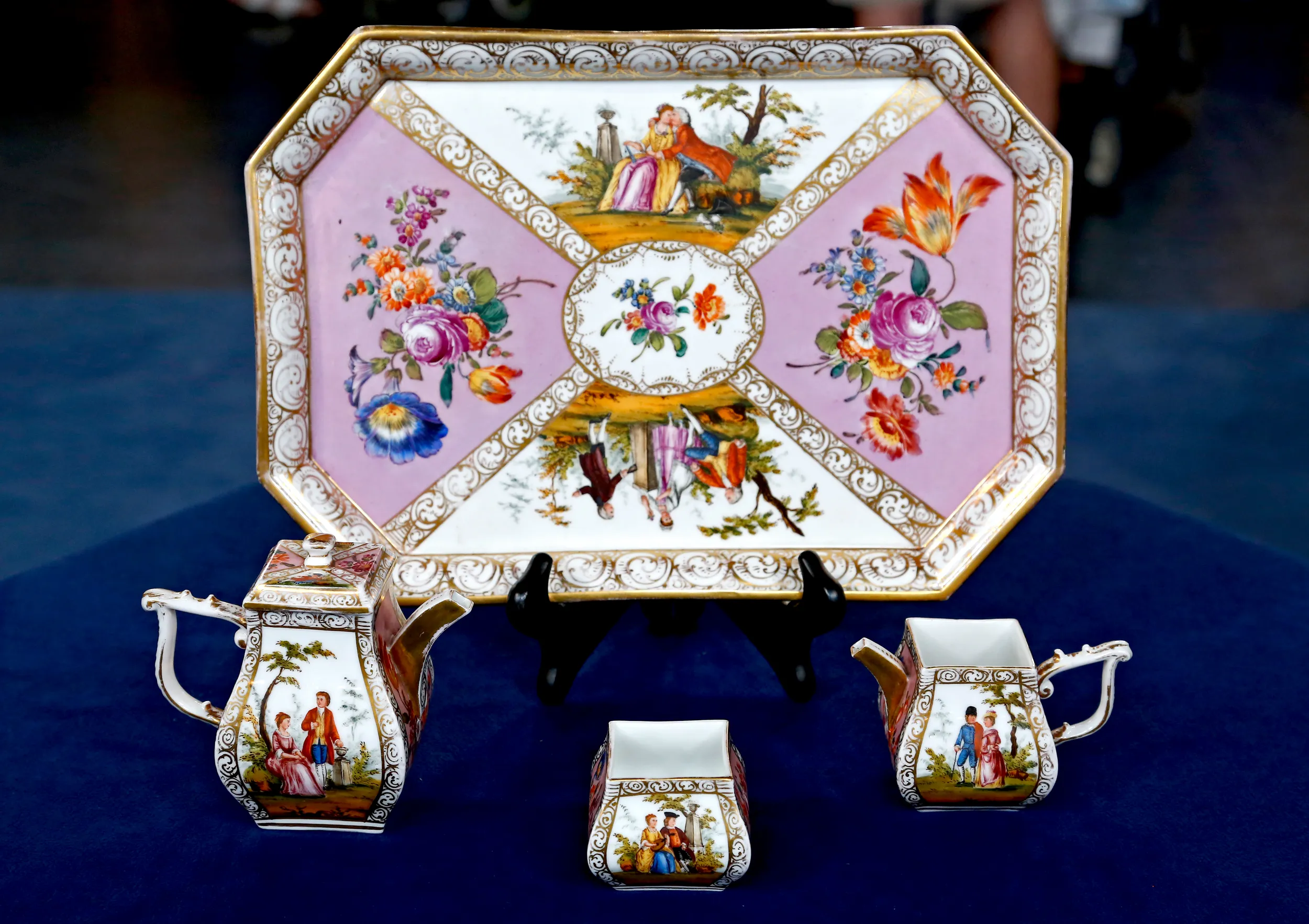GUEST: Back in 1971 through about '73, there was a little antique shop just outside of Philadelphia I used to frequent. The elderly woman who ran the shop, one day when I came in, said, "You know, I just got a piece from an odd lot from an estate sale and I know you'd appreciate it. I'd like you to see it." And she showed me this set. I was completely blown away by it, taken in by it. She said, "I know this is beyond whatever you spend." And I said, "I have to have it." And she sighted the amazing sum of $200. I said, "What is it?" And the only thing she could tell me was, she believed it was from Dresden, Germany, and she thought it was early 18th century but had no idea. After I bought it, I went to the main branch of the Philadelphia Library and in their reference section, I found the mark of the letter "A" that's on the bottom of it that was supposed to be Augustus, who was the emperor of Germany at the time. That's all I've ever known about it. I've had it for over 40 years now.
APPRAISER: $200 was actually an immense amount of money in the early '70s.
GUEST: Tell me about it.
APPRAISER: We look at it and we want to look at different attributes to see if this might actually be early 18th century or not. First of all, we look at the size. In the early 18th century, tea was very, very expensive. And the sizes of teapots, creamers and sugars, cups and saucers, were quite small. And these are quite small, so that's a good sign.
GUEST: Okay.
APPRAISER: Another thing we would look at is the style and color of the painting on the decoration. And this is very much in the Dresden style. Let's look at the mark that you discussed.
APPRAISER: It's hard to see, but here on the bottom is an underglaze letter "A." Painted on top of it is a gold mark. That's a gold rose, right. In the early 18th century, the first and the only significant European porcelain maker was Meissen. And they started around 1710. And there were other makers that appeared later, but Meissen was the first.
GUEST: And that's also German?
APPRAISER: In Germany, yes, near Dresden. And their first mark that they used was an "AR" mark, which stood for "Augustus Rex."
GUEST: Okay.
APPRAISER: Unfortunately, although this has some good attributes, it is a fake. An antique fake. It's well over 100 years old, but it is a fake of a much earlier porcelain. Now, we look at that letter "A" on the bottom. That is a mark used by a Dresden decorating company named Helena Wolfsohn. Named after an early owner of the factory. And this particular mark they quit using in the mid-1880s. So this would date around the 1880s. And the gold rose painted on top of the mark is another mark that company frequently used. Now, "Dresden" is a very confusing term. There is no such thing as the Dresden company. And people all the time say, "This is a piece of Dresden. It's made by Dresden." No, it was made in Dresden or near Dresden. And so this is the Dresden style. And there were many decorating firms in the city of Dresden who painted in this style, and she's one of the better known ones. So in today's market, my guess is that a retail price for this set would be somewhere between $400 and $600.
GUEST: Oh, wow, okay.
APPRAISER: Which is a decent amount of money. It still is a nice piece of hand-painted Dresden porcelain.
GUEST: I'm just surprised. I had really thought that I had a 300-year-old piece.















